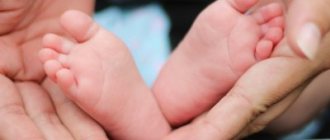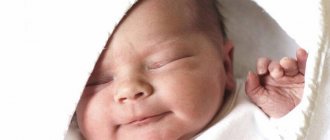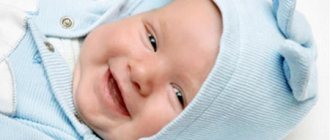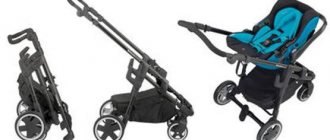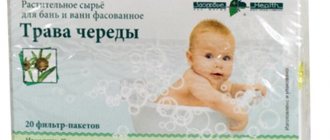Newborn clothing size chart
How many clothes of the same size to buy for a baby is determined only by you. It depends on the:
— number of washing machine starts (per day)
- use of diapers
- time of year.
When purchasing, keep in mind that the baby is growing quickly and, no matter how incredible it may seem, he adds 3 cm in height per month. In the same 30 days, he will become heavier by an average of 500 - 900 g. When he reaches 4 months, the baby becomes twice as large in all respects as at birth.
The size of a newborn's clothes by month will be determined by the mother as the baby grows. Each child has an individual pace of development. If you have doubts, you can contact a trusted pediatrician, but if you are sure that everything is fine with the child, then simply be guided not by general forecasts, but by observations of the baby’s growth.
There is no difference in the size of newborn boys and girls as such. Growth rates have been changing “far beyond...”. In the first 5 years the dynamics are almost the same.
Sometimes when purchasing (most often tights and underwear fall into this category), parents have to deal with “double” sizes. Don't worry, this is easy to deal with too. The main thing is to understand whether you are buying clothes at the moment or just to grow a little. Below is information that will help you figure out what size clothes to buy for a newborn.
Size Chart for Newborn Boys and Girls
To determine the size of children's things, you don't need any special knowledge. The key point is to measure the child’s height as carefully as possible, and then find the desired indicator in the table. Clothes for infant boys and girls are the same in size, differing only in colors.
| Age, months | Height (cm) | Size of clothes | Size of caps | Double size step |
| 0 — 3 | 50 — 54 | 56 (18) | 35 | 50/56 |
| 3 | 58 — 62 | 62 (20) | 40 | 56/62 |
| 6 | 63 — 68 | 68 (20) | 44 | 62/68 |
| 9 | 69 — 74 | 74 (22) | 46 | 68/74 |
| 12 | 75 — 80 | 80 (24) | 47 | 74/80 |
Infants do not differ much in appearance from each other when dressed, and the table of newborn clothing sizes by month for girls is exactly the same as the table of newborn clothing sizes by month for boys. Use one, you can't go wrong!
European Double Size Chart for Newborns
| Baby's age | First days of life | 3 months | 6 months | 9 months | 12 months |
| height, cm | 56 | 62 | 68 | 74 | 80 |
| Double European sizes | 50/56 | 56/62 | 62/68 | 68/74 | 74/80g |
If you are determined to select clothes according to individual measurements, then you need to be patient and have a measuring tape. Be prepared for the fact that your baby will not like the “intrusion into his privacy.” But you can get valuable information. Don’t forget to write them down on paper or use a special convenient program on your phone.
With clothes (rompers and bodysuits) everything is more or less clear, you can focus on appearance or ask the store salesperson for help, but what about the choice of hats? In this case, special clothing sizes for newborns are needed by month. When choosing a hat, height or weight does not matter. Before you buy a cap or hood, try to measure your baby's head. Place the measuring tape so that it goes along the most prominent parts of the back of the head and along the line above the eyebrows. If this is not possible, simply use the standards given in the table below.
Standards for clothing sizes for newborn children
Domestic and European standards have differences in designating the size of children's things. The size, as a rule, is developed taking into account the recommendations of specialists.
According to Russian GOST, when determining the size of children's clothing, the key indicators are chest circumference and height.
Foreign size sizing is based on height and does not take into account chest circumference. Therefore, when choosing a wardrobe, be sure to pay attention to the country of manufacture in order to immediately understand the specifics of the size chart.
Size chart of hats for newborns
| Baby's age | First days of life | 3 months | 6 months | 9 months | 12 months |
| Head circumference, cm | 38-40 | 41-43 | 43-45 | 45-47 | 47-49 |
It is impossible to complete a review of clothing sizes for newborns without mentioning socks and shoes. Indeed, a wardrobe is not complete until a pair of booties appears on the shelf. How to determine the size of a child's foot? Everything is very simple. Either you again focus on the approximate standard data, or measure the foot. The first option is quite acceptable for children under one year old.
Child growth by months
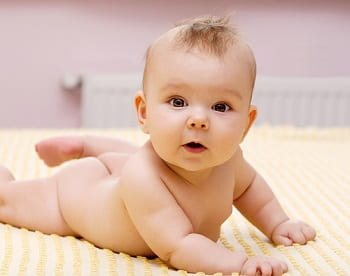
Height values in infants are an indicator of health. For this reason, pediatricians at the appointment look at the child’s growth by month. Low growth values may indicate developmental delay, high values may indicate hormonal disorders or other diseases.
Table of contents
|
Growth concept
When examining a baby, pediatricians evaluate physical development.
It is determined using the following indicators:
- height;
- weight;
- chest circumference;
- Head circumference;
- proportionality of these values.
First of all, the height and weight of the child are assessed.
Height is measured using a special lying stadiometer on which the baby is placed. Weight is determined using scales.
In this case, the baby is placed lying on his back. The circumference of the head and chest is checked using a centimeter.
After the measurements, the proportionality of development is assessed. To determine harmony, centile tables and graphs are used.
Growth in infants is subject to the following laws:
• growth indicators are indicators of health; if the baby is developmentally delayed, this may indicate a disease, hereditary short stature or a history of prematurity;
• the maximum growth rate in infants is observed in the first 3 weeks after birth, then the baby grows more slowly;
• the distal parts grow faster than the proximal ones (the foot grows faster than the lower leg, the lower leg lengthens at a faster rate than the thigh); The neck and head have the smallest growth rates.
• growth directions alternate - the bones and skull first grow in length and then in width; these phases replace each other.
• gender specificity - boys grow faster in infancy.
• maintaining speed - when an illness occurs, the body slows down growth for quick recovery, and after recovery the baby begins to grow again as before.
These laws are clearly visible in children under 1 year of age.
There are factors influencing growth rates:
• Genetic factor: if the parents are short, then the baby will have low growth rates, but at the same time develop harmoniously; when the parents are tall, the child will also be tall and harmoniously developed.
• Nutrition: proper and rational nutrition helps give the child all the necessary vitamins, micronutrients, proteins, fats, carbohydrates; lack of nutrients leads to malnutrition and a decrease in growth rates.
• External environment: the adverse effects of toxic substances and radiation contribute to developmental delays.
• Pathology of pregnancy: uterine bleeding, placental abruption, uterine tone, premature birth, intrauterine infections.
• Climate: highlands, heat and others.
These factors must be taken into account during the inspection.
Children's growth standards
Body length has its own values at different periods of time. In the first year of life, the increase in indicators is assessed quarterly (every 3 months).
Normal values:
- 1st quarter - +3 cm every month;
- 2nd quarter - +2.5 cm for each month;
- 3rd quarter - + 2 cm every month;
- 4th quarter – 1-1.5 cm every month.
During the first year, the baby gains +25 cm. The approximate height of a baby at 1 year is 75-76 cm.
A child's height at 2 years old increases by 12-13 cm. By the third year, the baby grows by 7-8 cm.
Centile tablets and child growth by month
Centile tablets were invented to make the work of pediatricians easier during appointments.
They are columns in which the minimum, normal and maximum height values are recorded.
Healthy children fit into the corridor 25-75. Corridors below 25 indicate developmental delay, above 75 - high and above average development.
Useful tips for mothers: CHILD DEVELOPMENT CALENDAR
If the baby does not enter the 25-75 corridor, the pediatrician may prescribe an examination to exclude diseases.
Development assessment by centiles:
| Meaning | Description |
| 3 | very low, 3% of infants without pathologies; examination and consultation with specialists is required |
| 3-10 | low, in 7% of patients without pathologies; examination required |
| 10-25 | less than average, occurs in 15% of non-ill children |
| 25-75 | average, in 50% of infants who do not have diseases |
| 75-90 | above average, detected in children without pathologies in 15% of cases |
| 90-97 | high, detected in 7% of infants who do not have diseases |
| 97 | very high, in 3% of children who are not sick. An examination, a visit to a pediatrician and specialized specialists is necessary. |
These centiles facilitate the assessment of physical development and allow timely identification of the disease.
The modern centile table of weights and heights for children was introduced in 2005 by the World Health Organization.
To compile the tables, a large multifunctional study was conducted on growth standards in 1977-2003.
There are height centile charts separately for boys and girls. Indicators of weight, head circumference, and chest are also identified for each gender separately.
Tablets for boys and girls are built differently, since the pace of development differs from each other.
To compile the tablets, healthy children living in different territorial zones and having different nationalities were taken.
All data obtained was systematized and entered into tables.
Centile tables are very easy to use. The signs have lines with the baby's age, as well as columns with corridors.
Using tables, the values of the baby’s height and weight data are compared with the norms (25-75 corridor).
Child boy height monthly 25-75 centile (cm):
| Months | Child's height |
| 0 | 50.0 — 53.2 |
| 1 | 52.8 – 56.3 |
| 2 | 55.8 – 59.5 |
| 3 | 58.6 — 62.4 |
| 4 | 61.3 — 65.6 |
| 5 | 63.4 — 67.9 |
| 6 | 56.6 — 69.9 |
These are values corresponding to ages up to 6 months.
Growth indicators after 6 months of age (25-75th centile, cm):
| Months | Child's height |
| 7 | 67.5 — 71.5 |
| 8 | 68.9 — 73.0 |
| 9 | 70.1 – 74.5 |
| 10 | 71.3 – 76.1 |
| 11 | 72.6 – 77.3 |
| 12 | 73.8 – 78.5 |
Boys have higher growth rates.
Growth of a girl child up to 6 months of age (months, 25-75 centile cm):
| Months | Child's height |
| 0 | 49.2 – 52.1 |
| 1 | 52.4 – 55.3 |
| 2 | 55.0 – 58.6 |
| 3 | 57.9 – 61.5 |
| 4 | 60.5 – 64.1 |
| 5 | 62.8 – 66.4 |
| 6 | 64.3 – 68.2 |
Girls' values are slightly lower.
Growth indicators of girls after 6 months of age (months, values 25-75 centiles in cm):
| Months | Child's height |
| 7 | 66.4 – 70.0 |
| 8 | 67.7 – 71.6 |
| 9 | 69.3 – 72.8 |
| 10 | 70.5 – 74.2 |
| 11 | 71.7 – 75.7 |
| 12 | 72.8 – 76.3 |
These are measurements for girls up to one year old.
After 12 months, the child’s height and weight are assessed by year, since the rate of increase in height and weight indicators decreases.
What to do if the patient’s anthropometric data do not correspond to normal
If the patient’s height and weight do not correspond to the norms, or there is a deviation on a smaller or larger side, you must come to an appointment with a pediatrician.
The doctor will collect anamnesis, assess the child’s condition, and prescribe an examination: general blood test, urine test, and others.
If a disease is suspected, the pediatrician refers the patient for consultation with specialists.
The list of examinations depends on the identified problems.
Possible referral for consultation to:
• endocrinologist – for diseases of the thyroid gland, disorders of hormone synthesis;
• gastroenterologist - if there are diseases of the digestive tract (weak esophageal-gastric sphincter, gastroenteritis, colitis, milk intolerance);
• oncologist – when there are suspicions of the presence of tumors, leukemia;
• allergist – for seasonal allergies to pollen, dust, animal hair;
• pulmonologist (if you have cystic fibrosis and other conditions).
Consultations with other doctors are also possible. Subject specialists will conduct an examination and rule out possible diseases that have caused advanced or delayed development.
The following examinations are possible:
• blood test for hormones - in case of lack or excess of somatostatin, sex hormones;
• blood for biochemistry - for joint diseases, autoimmune diseases, chronic pathologies;
• blood for tumor markers - help to identify cancer pathologies of various nature; each type of tumor has its own types of tumor markers;
• magnetic resonance imaging – excludes or confirms the presence of brain diseases, namely tumors, pathologies of the pituitary gland and other structures;
• computed tomography – examination allows you to determine the presence of tumor diseases, damage to the pituitary gland, internal organs, bones;
• radiography – diagnoses diseases of bones, joints, brain (location of tumors, condition and position of the pituitary gland, biological age of the child), internal organs (kidneys, bladder);
• allergy tests – to identify the type of allergen that worsens the patient’s health; stress tests to sensitize the baby’s body;
• Ultrasound examination - helps to identify brain diseases in children with open fontanelles (neurosonography), pathologies of internal organs.
Depending on the disease, one or another research method is chosen.
For example, if a baby is small in height and weight, anamnesis is collected from the parents.
The doctor will find out what the height and weight of the parents are, what the birth was like, how much on the Apgar scale the baby was born, and at what time. After collecting anamnestic data, a consultation with an endocrinologist is scheduled.
This is the first specialist to whom the patient needs to be referred. Further, according to the decision of the pediatrician, consultations with other specialists are permissible.
Pediatricians must monitor the values of height and weight indicators throughout the entire period of the child’s growth.
Anthropometric data allows for timely detection of diseases. This is explained by the fact that anthropometry indicators reflect the general health of a small patient.
- about the author
- Recent publications
Olga Kuznetsova
author of the publication (site editor)
DOCTOR - PEDIATRIC Education: Siberian State Medical University. Certificate of specialist in the specialty "Pediatrics"
Olga Kuznetsova recently published (see all)
- At what age can a child have an omelet - 10/05/2020
- Hypoallergenic diet for mom - 10/03/2020
- How to introduce eggs into complementary foods for a child - 09/27/2020
Shoe size chart for newborns
Of course, you can go to the store and “try on” (visually compare) things on your baby that you doubt the size of. But a maximum of a couple of months will pass and you, as a real fashion designer, will be able to determine which suit is suitable for your baby and which is not. Even if the label fully meets your requirements.
At the end of the article, it is worth noting that at birth, babies weigh from 2.5 kg to almost 5 kg, and their height varies from 43 to 55 cm. If you buy clothes for a newborn in the range from size 50 to 62, then everything will be fine . Mothercare is delighted to invite you to shop in our online store. High-quality and easy-to-care items will bring pleasure and comfort to your child.
Table of clothing sizes for newborns by month and height
| Age | Height (cm) | Hip circumference (cm) | Waist(cm) | Chest (cm) | Size |
| 0 months | up to 50 | 42-44 | 40-43 | 40-43 | 50 |
| 0-1.5 months | 51-56 | 44-46 | 42-45 | 42-45 | 56 |
| 1.5-3 months. | 57-62 | 46-48 | 44-47 | 44-47 | 62 |
| 3-6 months | 63-68 | 48-50 | 46-48 | 46-49 | 68 |
| 6-9 months | 69-74 | 50-52 | 47-50 | 48-51 | 74 |
| 9-12 months | 75-80 | 52-54 | 49-51 | 50-53 | 80 |
| 1-1.5 years | 81-86 | 54-56 | 50-52 | 51-55 | 86 |
| 2 years | 87-92 | 56-58 | 51-53 | 52-56 | 92 |
It is better to choose clothes for a newborn based on height. This way, you will choose the most suitable clothes that will not need to be exchanged in the store. You can focus on the age of a newborn by months, if only the child grows with standard parameters.


